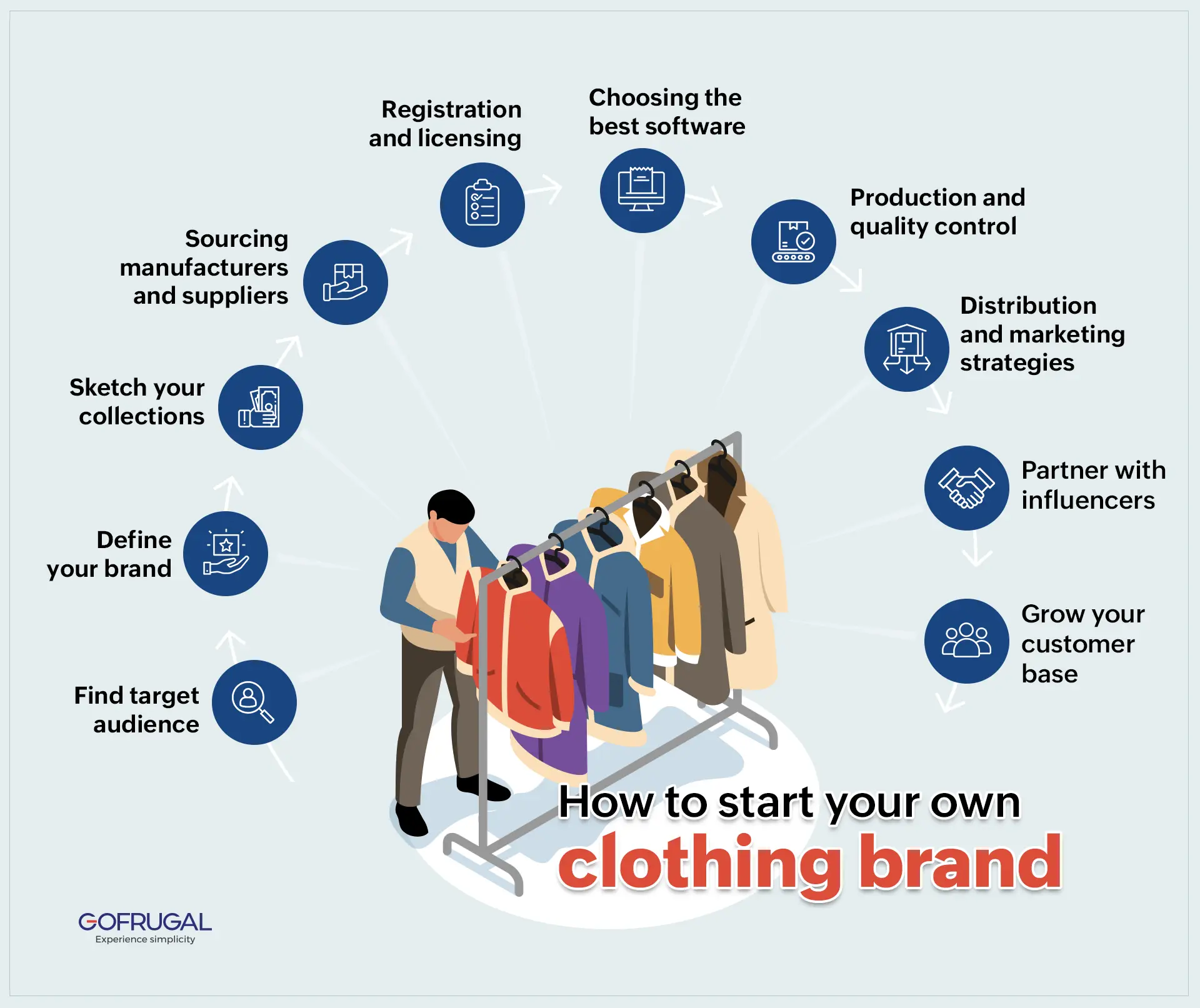The Role of Fabric in Defining Quality in Branded Clothing
The Role of Fabric in Defining Quality in Branded Clothing
Blog Article
The Importance of Sustainable Clothes: Just How It Impacts the Environment and Your Closet
Lasting clothes is increasingly recognized for its critical duty in decreasing the ecological effect of the fast garment industry. By concentrating on eco-friendly products and honest manufacturing techniques, it deals with pushing environmental worries. This shift not only benefits the planet however also influences customer selections, bring about a much more thoughtful approach to closet administration. Comprehending these dynamics elevates essential concerns concerning style's future and personal responsibility fit it.
The Ecological Footprint of Fast Style

Advantages of Sustainable Products
Sustainable materials provide significant advantages, specifically via eco-friendly fabric selections that minimize ecological damage. These materials also demonstrate longevity and longevity, minimizing the requirement for constant substitutes. Therefore, they contribute to an extra sustainable fashion sector and promote responsible consumer habits.
Eco-Friendly Fabric Selections
While the style sector has long been connected with fast trends and environmental injury, the increase of eco-friendly fabric selections provides a transformative chance. Lasting products such as natural cotton, hemp, and Tencel have gained appeal because of their reduced environmental impact. These textiles are commonly produced without dangerous pesticides and need less water, minimizing their carbon footprint - Branded Clothing. Additionally, lots of eco-friendly materials are biodegradable, contributing to a circular economy by lessening waste. Picking lasting products not only supports eco accountable methods however likewise advertises healthier ecological communities. As customers end up being more knowledgeable about their purchasing power, the demand for eco-friendly materials urges brands to introduce and take on even more sustainable production approaches, eventually benefiting the world and future generations
Longevity and Longevity Benefits
Many consumers are significantly acknowledging the toughness and longevity advantages of lasting materials in their apparel choices. Unlike standard textiles, sustainable products such as organic cotton, hemp, and recycled polyester are engineered to hold up against damage, causing garments that last longer. This reduced regularity of substitute not only conserves customers cash with time however likewise lessens waste created by fast fashion. Additionally, sustainable apparel often uses environmentally friendly production techniques that enhance fabric stamina, adding to a decrease in the total carbon footprint. By purchasing sturdy garments, customers can grow a more sustainable closet while taking pleasure in top quality pieces that keep their visual and functionality gradually. Sturdiness and long life stand as key benefits of selecting lasting materials.
Reducing Waste With Lasting Practices
Reducing waste in the apparel industry can be accomplished through innovative techniques such as upcycling and repurposing products. In addition, embracing minimal closet methods urges consumers to focus on high quality over quantity, ultimately decreasing clothing consumption. With each other, these methods contribute significantly to a much more lasting clothes version.
Upcycling and Repurposing Materials
Upcycling and repurposing products have become ingenious approaches in the garment industry, transforming discarded textiles into valuable new items. This method not only decreases waste but likewise encourages creative thinking and originality in clothes style. By taking old garments and products, developers can create special items that mirror individual style while reducing the need for brand-new resources. In addition, upcycling frequently needs less power and water contrasted to conventional manufacturing processes, greatly decreasing the environmental footprint of style. As consumers come to be much more aware of sustainability, the appeal of upcycled garments remains to increase, promoting a circular economy. Eventually, these techniques add to an extra sustainable future, where fashion prioritizes environmental wellness over fast manufacturing and consumption.

Minimal Closet Methods
As individuals significantly look for to minimize their environmental impact, embracing minimal closet strategies has actually gotten traction as an effective strategy to sustainable style. These approaches stress quality over amount, encouraging customers to curate a smaller sized collection of versatile, resilient apparel. By concentrating on timeless items that can be combined and matched, people can lower the regularity of acquisitions and eventually lower waste.Additionally, minimalism advertises conscious intake, prompting customers to assess the moral and ecological implications of their choices. This strategy not only cultivates an extra sustainable lifestyle however likewise simplifies day-to-day decision-making regarding attire. As individuals accept minimal principles, they add to a fashion society that values sustainability and responsible consumerism, eventually leading to a more eco-conscious society.
The Duty of Honest Labor in Lasting Fashion
While several consumers are increasingly mindful of the environmental repercussions of their clothing options, the significance of honest labor techniques in sustainable style can not be overlooked. Ethical labor incorporates fair incomes, risk-free working problems, and respect for workers' legal rights, forming the backbone of accountable fashion production. Brands that prioritize honest labor not only boost neighborhoods however also set a standard for liability in the industry.Moreover, the combination of honest methods fosters openness, allowing you can check here consumers to make enlightened selections about their acquisitions. This method contrasts dramatically with rapid fashion's exploitative labor models, which commonly prioritize profit over individuals. By sustaining business dedicated to moral labor, customers add to a system that values human self-respect together with ecological sustainability. Subsequently, moral labor is not merely an add-on; it is vital to the wider goal of lasting fashion, making sure that the mission for eco-friendliness does not come with the cost of civils rights.
The Impact of Sustainable Apparel on Carbon Emissions
Lasting clothes has the possible to substantially lower carbon exhausts connected with the fashion business. Standard garment manufacturing contributes especially to greenhouse gas discharges, primarily because of energy-intensive production processes and the usage of non-renewable sources. In comparison, lasting style concentrates on eco-friendly materials, such as natural cotton or recycled fibers, which typically call for much less power to produce.Moreover, sustainable brand names have a tendency to embrace extra efficient production methods, minimizing waste and reducing general discharges. By focusing on longevity and ageless style, sustainable apparel motivates consumers to purchase much less regularly, more reducing the carbon footprint related to overconsumption.Additionally, many lasting brand names are devoted to openness in their supply chains, making it possible for customers to make informed choices that straighten with their values. Eventually, moving towards sustainable clothes can bring about a substantial decrease in carbon exhausts, contributing to a much healthier earth and a much more sustainable future for the style market.
Supporting Regional Economies With Sustainable Options
The change towards lasting garments not only addresses ecological problems however likewise substantially advantages local economies. By choosing sustainable fashion, consumers often sustain local craftsmens and small organizations, boosting neighborhood resilience. These ventures typically operate a smaller range, focusing on workmanship and ethical techniques over mass production.Investing in locally made sustainable garments promotes work creation and boosts financial development within neighborhoods. As customers become more knowledgeable about the ecological effect of their acquisitions, they significantly choose items that show their worths. This demand motivates regional makers to adopt sustainable techniques, adding to a useful reference circular economy.Moreover, supporting regional companies lowers transportation discharges, aligning with eco-conscious consumer habits. The interconnectedness of lasting garments and regional economic situations emphasizes the essential function that specific selections play in promoting both financial and ecological wellness. By cultivating these regional links, areas can thrive while additionally functioning in the direction of Discover More a much more lasting future.
Changing Your Storage Room: Tips for a Sustainable Wardrobe
As individuals seek to reduce their environmental impact, transforming a storage room into a lasting closet comes to be a vital action. One efficient method is to evaluate existing apparel, maintaining just things that are used consistently and that straighten with sustainability objectives. Focusing on quality over amount is crucial; buying resilient pieces from eco-friendly brand names can significantly minimize waste.Additionally, incorporating pre-owned products can breathe brand-new life right into a closet while minimizing ecological damages. Organizing apparel swaps with close friends or giving away unused items can additionally advertise sustainability.When buying, people should look for products that are natural, recycled, or biodegradable, and stay clear of fast style merchants - Branded Clothing. Exercising mindful intake by attentively taking into consideration each purchase can add to an extra lasting way of living. By implementing these suggestions, one can develop a closet that mirrors personal style while sustaining environmental stewardship
Frequently Asked Questions
Just How Can I Identify Sustainable Apparel Brands?
To recognize lasting apparel brands, one need to investigate products used, look for accreditations like Fair Profession, and examine the brand's openness about their production procedures, labor techniques, and environmental influence, making sure environmentally friendly and ethical methods are prioritized.
What Are the Costs Related To Sustainable Style?
The expenses related to lasting fashion can vary considerably. Greater production costs, moral sourcing, and eco-friendly materials commonly bring about boosted list prices, which might deter some customers while interesting eco aware customers.
Can Lasting Garments Be Elegant and Fashionable?
Lasting clothes can undoubtedly be fashionable and fashionable. Designers progressively prioritize innovative materials and ethical manufacturing techniques, showing that fashion and sustainability can coexist. Customers currently have diverse alternatives that mix aesthetic appeals with environmental awareness.
How Does Laundering Garments Affect Their Sustainability?
Cleaning garments considerably influences sustainability by consuming water and energy, adding to contamination, and causing microplastic launch. Regular washing can break down textiles, reducing their life expectancy and boosting the requirement for replacements, eventually worsening environmental issues.
What Is the Lifespan of Sustainable Garments Compared to Quick Fashion?
The lifespan of sustainable clothes generally surpasses that of rapid style products, commonly enduring numerous years as a result of quality materials and workmanship. In comparison, rapid fashion garments may degrade quickly, necessitating even more constant replacements. Lasting clothing is increasingly acknowledged for its essential role in minimizing the environmental influence of the quick style industry. While lots of consumers are progressively mindful of the ecological consequences of their clothes selections, the relevance of ethical labor techniques in sustainable fashion can not be ignored. Branded Clothing. Sustainable clothes has the potential to substantially reduce carbon emissions connected with the style sector. In contrast, lasting style concentrates on green materials, such as natural cotton or recycled fibers, which frequently require less power to produce.Moreover, lasting brand names have a tendency to adopt a lot more effective manufacturing practices, lessening waste and lowering total exhausts. By focusing on longevity and timeless design, lasting clothes urges customers to buy much less regularly, further decreasing the carbon footprint linked with overconsumption.Additionally, lots of sustainable brands are dedicated to transparency in their supply chains, allowing consumers to make educated selections that straighten with their values
Report this page